Roses add beauty to gardens, but winter can be tough on these plants. Proper care before and during cold months helps roses survive and thrive when spring arrives.
Preparing roses for winter involves simple but important tasks that shield plants from cold, wind, and moisture. These steps help roses stay strong through freezing temperatures and come back strong in spring. With the right care, gardeners can enjoy beautiful roses season after season.
1) Prune Roses in Late Fall
Late fall is a key time to prune roses for winter readiness. As temperatures drop, trim back the plants to prepare them for colder months ahead.


- Cut away dead or diseased branches first.
- Remove any crossing stems to improve air flow.
- Shorten remaining canes by about one-third their length.
- Pruning helps roses conserve energy during winter dormancy.
- It also shapes the plant for better growth next spring.
- Use clean, sharp pruning shears to make clean cuts.
- Angle cuts away from the center of the plant to let water drain off easily.
After pruning, clear away fallen leaves and debris around the base of the rose bush. This reduces hiding spots for pests and diseases over winter.
2) Clean Up Fallen Foliage
Cleaning up fallen leaves around rose bushes is a key step in winter preparation. Fallen foliage can harbor pests and diseases that might harm roses.


Rake away all leaves at the base of rose plants. This removes potential hiding spots for pests and prevents diseases from overwintering.
It’s important not to compost these leaves. They may contain pathogens that could spread to other plants. Instead, dispose of them in the trash or by burning if local regulations allow.
Regular cleanup throughout fall helps prevent buildup. This makes the final pre-winter cleanup easier and more effective.
Removing fallen leaves also improves air circulation around the base of rose plants. Better airflow reduces moisture buildup, which can lead to fungal growth.
3) Apply Mulch Around Base
Mulching roses helps protect their roots from winter’s harsh conditions. Apply a 3-inch layer of mulch around the base of each rose plant.
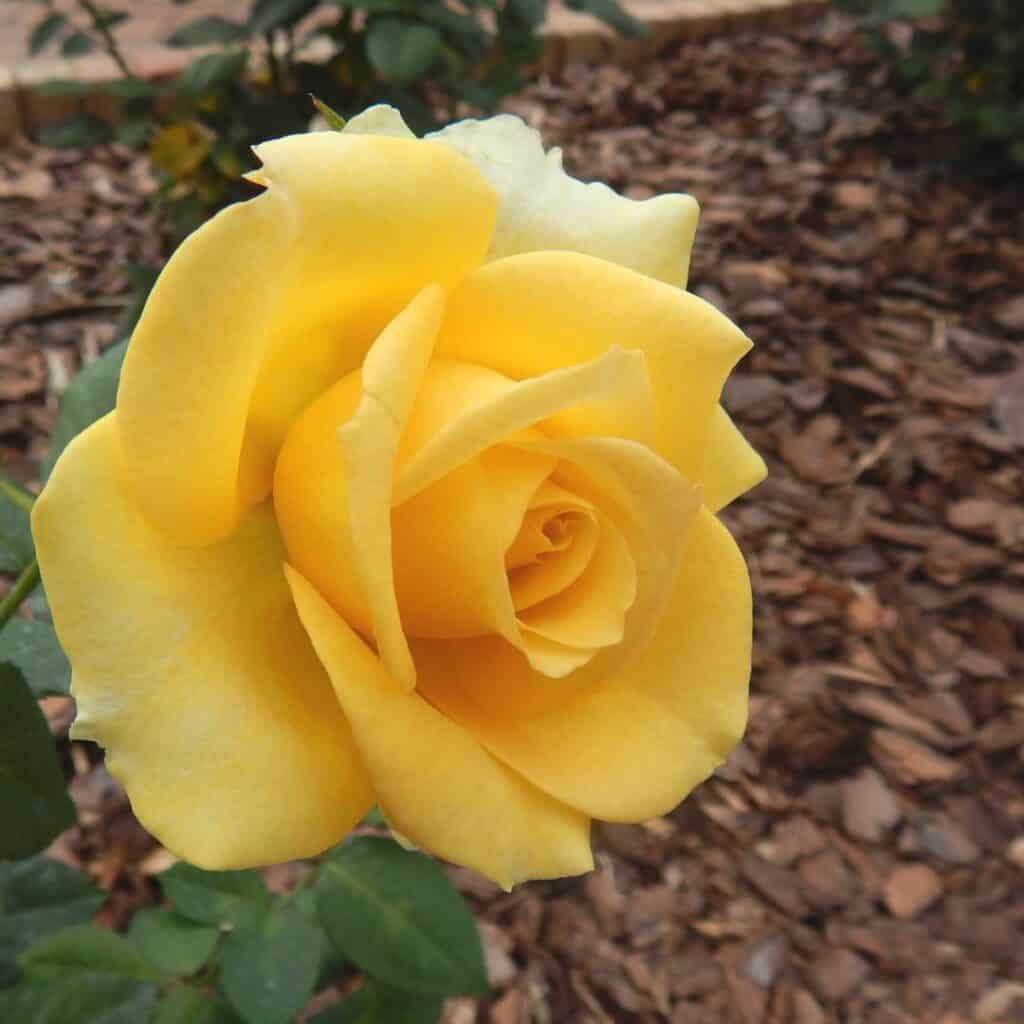

- Use organic materials like shredded bark, wood chips, or compost.
- These materials regulate soil temperature and retain moisture.
- Spread the mulch outward to cover the width of the rose’s canopy.
- This ensures complete root protection.
- If old mulch remains from the previous year, top it up to maintain a 3″-inch thickness.
- Apply mulch in late spring again after the first feeding of the season.
For roses with existing cedar mulch, pull it back to expose a 12″-inch circle around the base. Then, add new mulch to this area for optimal protection.
4) Water Deeply Before First Frost
Watering roses regularly and deeply before the first frost is crucial. Roses need about 2 gallons of water per week until the first freeze.
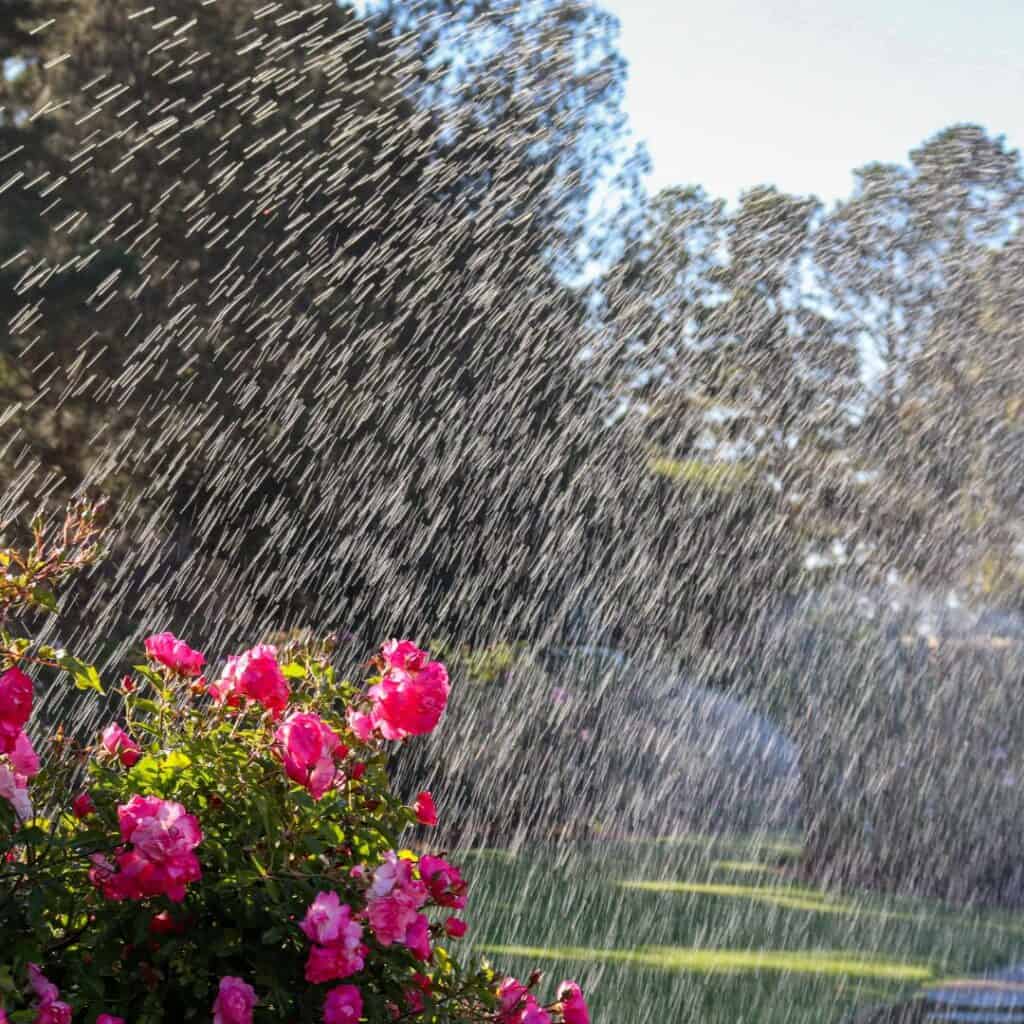

- Deep watering twice a week at the base of the plant is recommended.
- This method helps prevent wet leaves, which can lead to fungal issues and blackspot.
- Proper watering prepares roses for winter by ensuring they are well-hydrated.
- This helps them better withstand the cold and dry conditions of winter.
- It’s important to continue watering until the ground freezes.
- This gives the roses a good moisture reserve to rely on during dormancy.
- Gardeners should adjust their watering schedule based on local weather conditions and soil type.
- Clay soils retain moisture longer, while sandy soils may require more frequent watering.
5) Protect Graft Unions with Soil
Grafted roses need extra care to survive winter. The graft union is where the rootstock meets the scion. This spot is sensitive to cold.
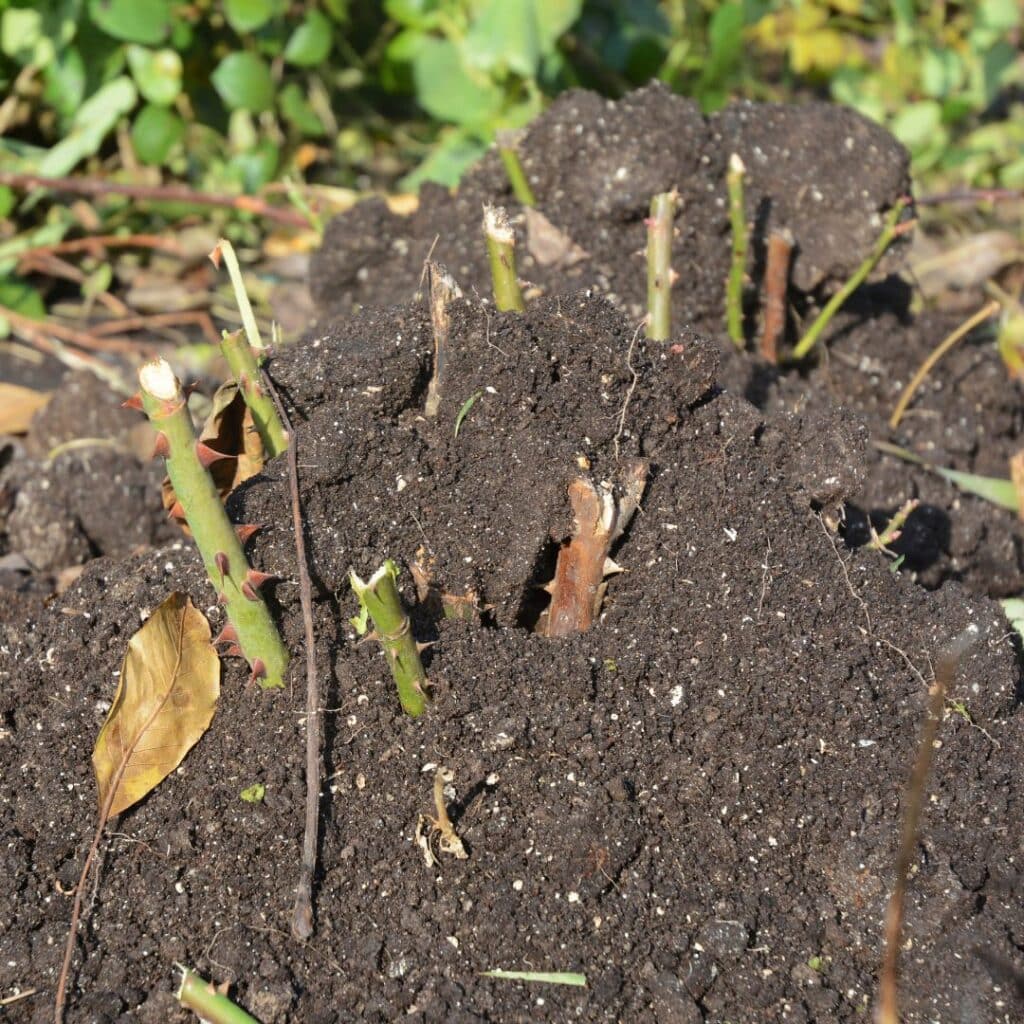

- Protecting the graft union with soil helps insulate it.
- After a hard frost, pile 6″ to 12″ inches of soil over the crown.
- This covers the graft union.
For zones 4 and 5, plant the graft 2 to 3 inches below soil level. This gives added protection from harsh winters.
In spring, remove the extra soil. This lets the plant grow normally. Mulch or leaves can also be used instead of soil.
This method keeps the graft union safe from extreme cold. It helps roses survive tough winters and bloom again next year.
6) Use Breathable Rose Cones
Breathable rose cones offer great protection for roses during winter. They shield plants from harsh winds and heavy snow while allowing air circulation.


- Rose cones are easy to use. Gardeners simply place them over rose bushes after the first frost.
- It’s important to choose cones with ventilation holes or mesh tops.
- Good air flow prevents moisture buildup and fungal growth.
- Cones also keep the temperature more stable around roses.
- This protects them from freeze-thaw cycles.
Some cones come with removable tops. These let gardeners adjust ventilation on warmer winter days. Removing the top occasionally helps prevent overheating.
When using cones, it’s best to secure them to the ground. Stakes or heavy objects work well for this purpose.
7) Avoid Fertilizing After Summer
Stopping fertilizer use after summer is key for healthy roses in winter. Fertilizers promote new growth, which can be damaged by cold weather.


- Cease fertilizing by mid-August to let roses slow their growth naturally.
- This helps them enter dormancy at the right time.
Continuing to feed roses late in the season can make them more vulnerable to frost damage. It may also delay the hardening process that protects them from winter’s chill.
Instead of fertilizing, gardeners should focus on deep watering. This helps roses build stronger roots to survive the winter months.
By avoiding fertilizer, rose bushes can properly prepare for colder temperatures. This simple step greatly improves their chances of thriving in spring.
8) Remove Any Diseased Leaves
Taking care of rose bushes in fall means removing any diseased leaves. This step is key for keeping roses healthy during winter.
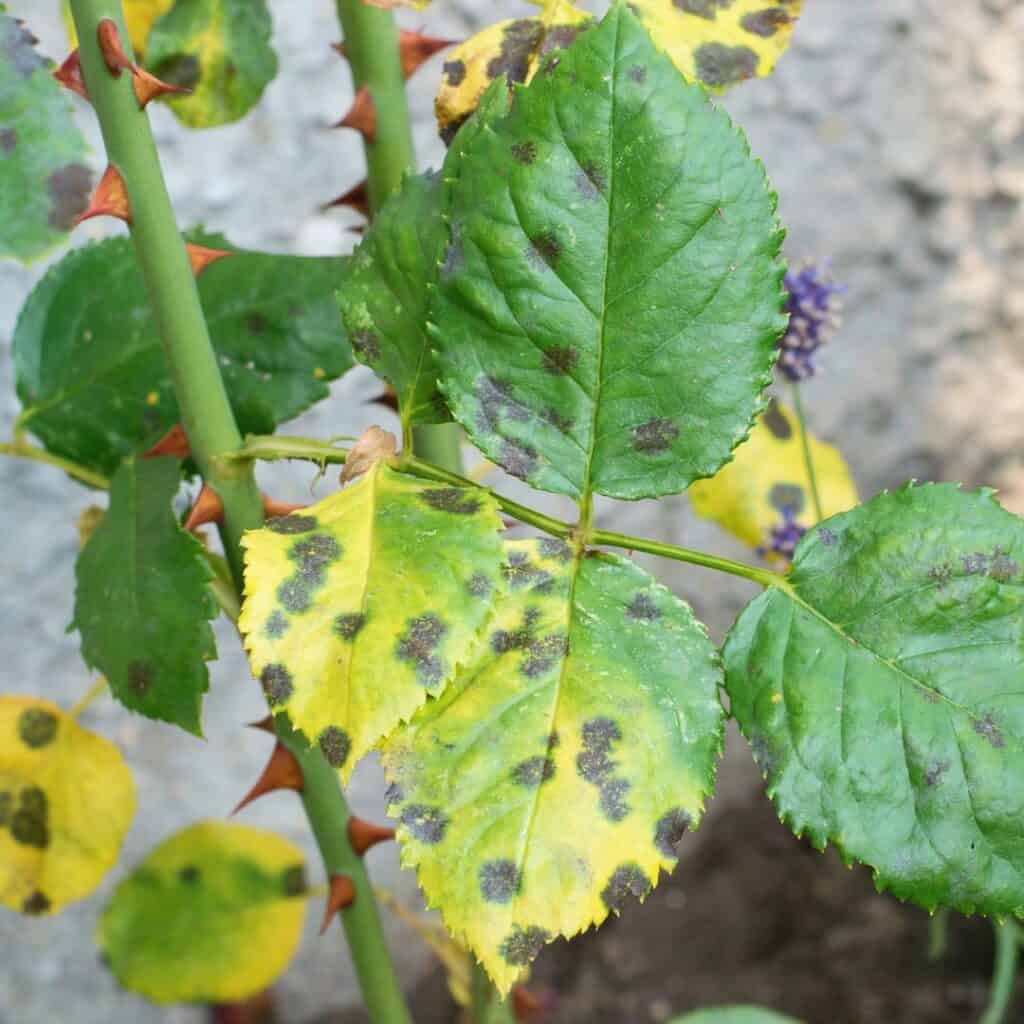

- Look for leaves with spots, discoloration, or unusual growth.
- These are signs of disease. Pick off these leaves carefully by hand or use clean pruning shears.
- Don’t let diseased leaves stay on the ground.
- They can spread problems to healthy parts of the plant. Collect and throw away all fallen leaves.
- Clearing garden beds of debris helps stop issues in spring.
- It gets rid of places where pests and diseases might hide over winter.
This cleaning also makes the garden look neat. It prepares the area for winter and sets up roses for a strong start next year.
9) Tie Canes to Prevent Wind Damage
Strong winds can damage rose canes in winter. Tying the canes helps protect them from breaking or getting whipped around.
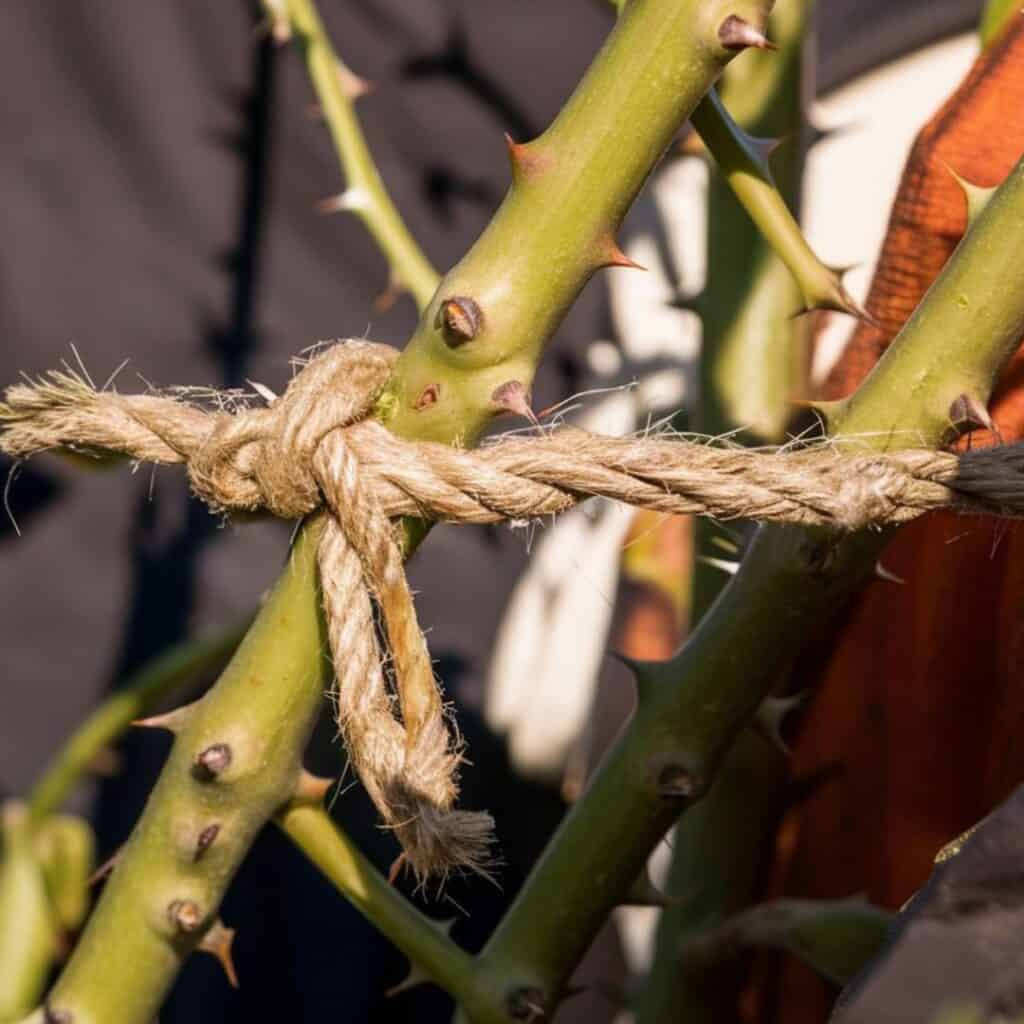

- Use twine or soft plant ties to gently secure the canes together.
- This reduces movement and prevents them from hitting each other or nearby objects.
For climbing roses with long canes, remove them from trellises or supports. Lay the canes on the ground if possible. Cover them with soil for extra protection from cold and wind.
Tying canes also makes it easier to cover roses with protective materials like burlap or frost cloth. This extra layer shields the plant from harsh winter conditions.
Remember to tie the canes loosely to allow for some movement. Too tight bindings can damage the plant as it grows.
10) Spray dormant oil on plants
Dormant oil sprays help protect roses during winter. Apply the spray when plants are dormant and temperatures are above 40°F.
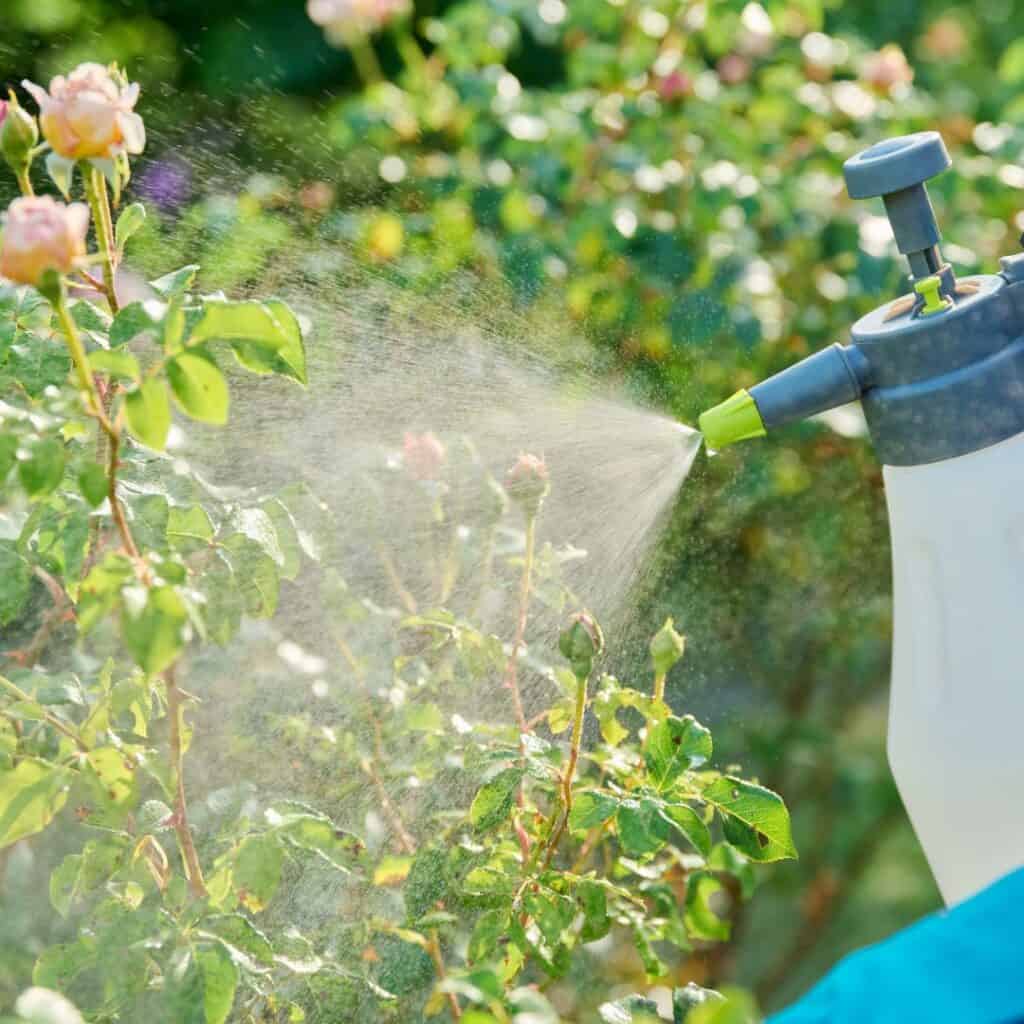

Dormant sprays spread best in warm weather. Avoid spraying on windy days or when freezing temperatures are expected soon after.
The oil coats and smothers overwintering pests and their eggs. It also helps prevent fungal diseases in spring.
Mix dormant oil with water according to package instructions. Then, thoroughly coat all parts of the rose plant, including stems and undersides of leaves.
Reapply if heavy rain washes off the spray. A second application in late winter provides extra protection as buds begin to swell.
11) Cut Back on Deadheading
As winter approaches, it’s time to ease up on deadheading your roses. Deadheading is the process of removing spent blooms to encourage new growth and more flowers.
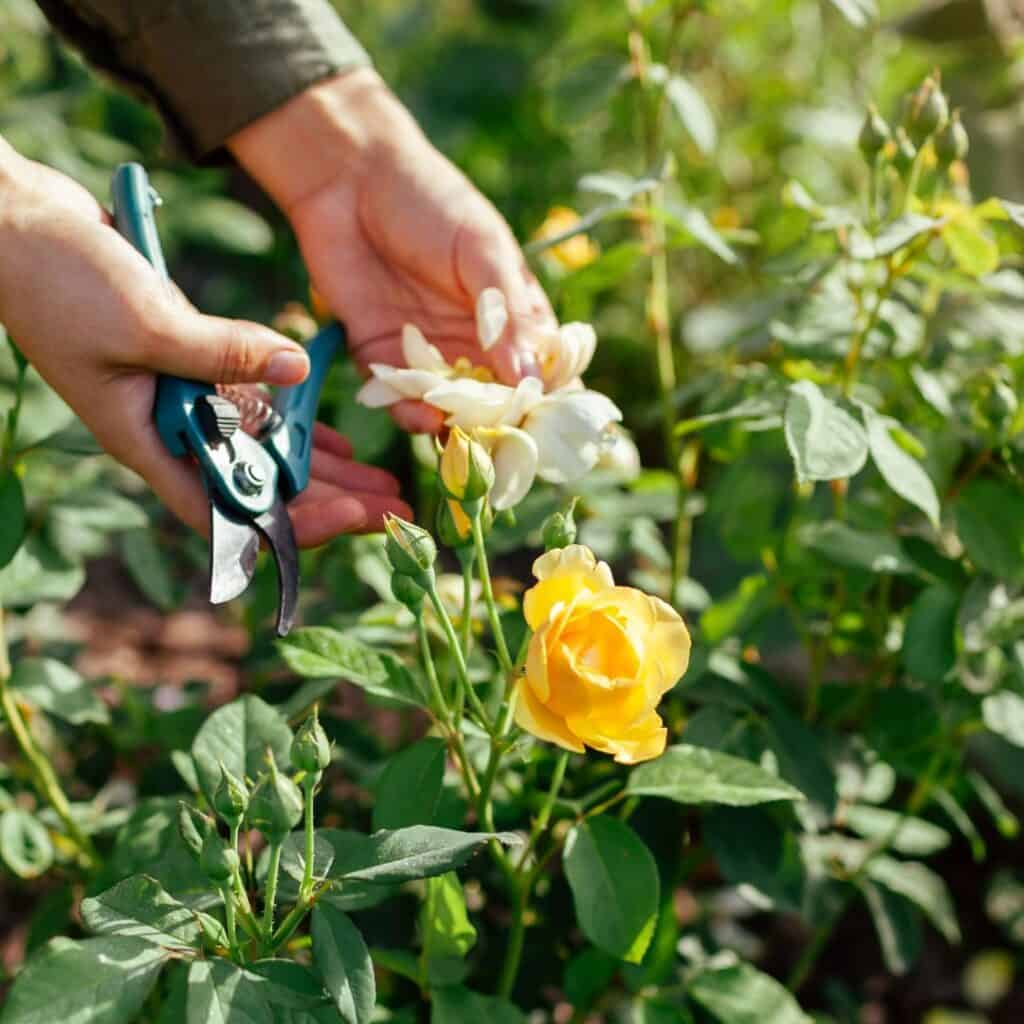

In late fall, stop deadheading your roses. This allows rose hips to form, which signals the plant to prepare for dormancy.
Rose hips are the seed pods that develop after the flowers fade. They contain vitamins and nutrients that help roses survive winter.
Leaving the final blooms of the season on the plant also provides winter interest in your garden. The faded flowers and developing hips can add texture and color to the winter landscape.
Remember, cutting back on deadheading is just one step in preparing your roses for winter. It works best when combined with other winter care practices.
Understanding Winter Hardiness
Winter hardiness refers to a rose’s ability to survive cold temperatures. Knowing your climate and rose variety helps you prepare for winter protection.
Hardiness Zones and Their Impact
The USDA Hardiness Zone map divides North America into zones based on average winter temperatures. Each zone represents a 10-degree Fahrenheit range.
Roses are labeled with the coldest zone they can survive in without protection.
Zone 5 roses can handle -20°F to -10°F winters. Zone 7 roses tolerate 0°F to 10°F. Check your local zone to choose roses that fit your climate.
Microclimates in your yard can affect hardiness. South-facing walls provide warmth. Low spots collect cold air.
Consider these factors when placing roses.
Types of Roses and Their Winter Needs
Different rose types have varying cold tolerance.
Hardy shrub roses need little winter care in most zones. Hybrid teas and floribundas often require more protection.
Species roses and hardy hybrids like rugosas can often survive winter uncovered. Examples include ‘Hansa’, ‘Snow Pavement’, and ‘John Davis’.
Tender roses may need extra care:
- Climbing roses: Lay canes on the ground and cover
- Grafted roses: Protect the graft union
- Container roses: Move to a sheltered spot
Know your rose type to provide the right level of winter protection. This helps ensure healthy plants come spring.
Essential Winterizing Techniques
Protecting roses from winter damage requires specific methods. These techniques help shield plants from harsh conditions and promote healthy spring growth.
Proper Mulching Methods
Mulching roses is key for winter protection.
Apply a 3-4 inch layer of organic mulch around the base of the plant. Use materials like straw, leaves, or wood chips.
This insulates the roots and keeps soil temperature steady.
Avoid piling mulch directly against the stem. Leave a small space to prevent rot.
Extend the mulch out to the drip line of the plant. This covers the entire root zone.
For climbing roses, mound soil or compost around the base. This protects the graft union from freezing. Remove this mound in spring when new growth starts.
Correct Pruning Practices
- Prune roses in late fall or early winter.
- Cut back long stems to prevent wind damage.
- Remove dead, diseased, or crossing branches.
- This improves air flow and plant health.
- For hybrid tea roses, prune to about 30″ inches tall.
- For shrub roses, remove up to one-third of the growth.
- Don’t prune too much, as this can stimulate new growth vulnerable to frost.
- Clean your pruning tools with rubbing alcohol between cuts.
- This prevents the spread of disease.
- Make clean, angled cuts just above outward-facing buds.




